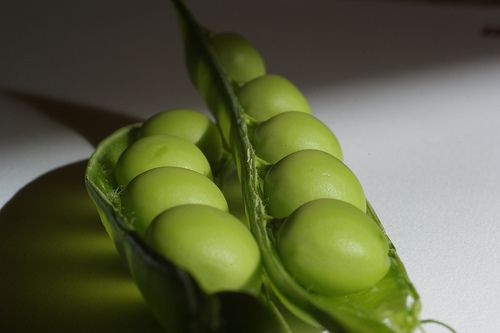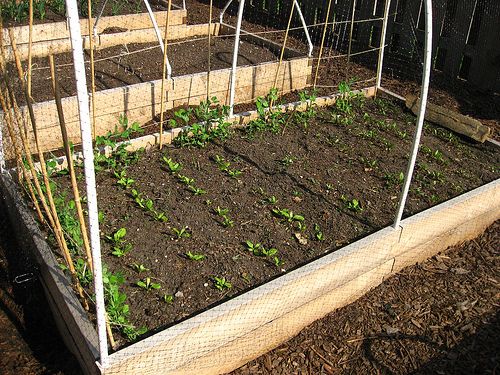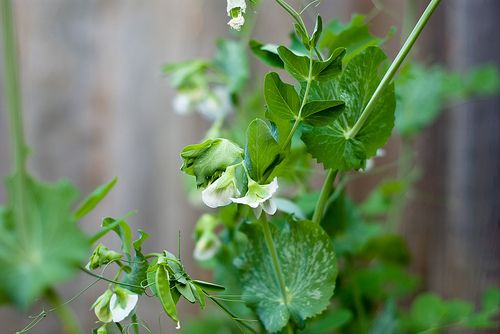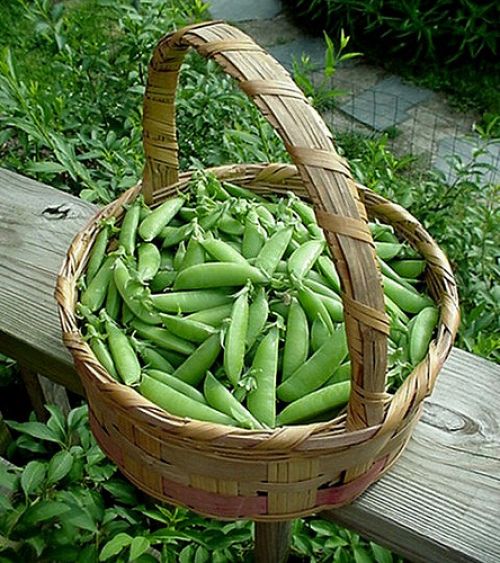
Weren’t we just talking about summer vegetables?
Don’t freak out on me, we still have plenty of lovely weather left this season and there all the summer lovelies that need harvesting for weeks yet. But, it’s always nice to get a little jump on the coming planting season and at least begin to think about what we’d like to see in our fall and winter gardens. Now is a great time to peruse seed catalogs and local nurseries to take a peek at what’ll be available to you when you do want (or can) get the next garden going in your neck of the woods.
Peas are the garden legume of the cool weather and just like everything home grown, peas don’t get any tastier than when they’re fresh from the vine. There are several pea types to choose from; each delicious in their own way. There are the traditional garden peas, which have a tough pod, so you’ll need to shell these guys before eating them. Snow peas or Chinese peas are like the sugar snap ones and are heralded for their tender pods. The sugar peas are the ones that are terrific to snap off the vine and enjoy right there in the garden.
Peas come in bush or runner varieties just like beans, so that’s something you’ll want to think about while you’re planning. Be sure to choose a variety that’s resistant to powdery mildew as they’re prone to it. They like to grow in well-drained soil that’s high in organic matter (think compost).
Here’s a little something that seasoned gardeners go ’round and ’round about. Whether a little nitrogen should be added or not when you first plant the seeds. Some gardeners swear by this step, some say it’s completely unnecessary. So, here’s the deal. While peas are legumes and legumes certainly create their own nitrogen from bacteria rather efficiently, they don’t actually pull this cool trick for quite a few weeks – so it couldn’t hurt to give them a leg up, right?
Peas are usually planted in situ (where they’ll live out their lives) and need to planted 1″-2″ deep. If you’re planting a bush variety, planting them in double rows 6″-8″ apart will make it possible for the 2′-4′ plants to support each other. These can also be sown in “blocks” only a few inches apart. If you’re planting the pole type, plant the peas 2″ apart at the base of a trellis or any other supportive frame as they’ll climb 6′-8′ up.
Netting is especially nice for growing peas because peas climb with little curling tendrils and need vertical as well as horizontal support. One of my favorite ways is to grow them up a compost pile that’s constructed of wire mesh. One thing is for sure, you want to have whatever support you decide on put into place at the same time you plant your pea crop because there’s no untangling the tendrils later! By the way, try planting some sweet peas among your crop peas for some spring-color-in-the-fall as well as their sugary scent.
Depending on the variety an your zone, you’ll have your first pea pods anywhere from 2 to 4 months after planting. Be sure to harvest them from the get-go (no matter how few) because it encourages more pods to set on the vines. You want to harvest garden peas when the pods are full, but not bulging. Even if you do wait too long to gather some – pull them off anyhow or the plant will be signaled to stop production altogether. Take the sugar peas when both the pod and the peas are a bit full, and snow peas when they reach their mature length, but aren’t fully developed inside. It takes some practice to harvest with precision on each variety – but you’ll get the hang of it.
Peas like even watering, which is sort of like a “definite maybe”, I know. What is important is that the seeds need enough water to germinate, yet if they get too much water before flowering you won’t see as many pods. If the plants get too dry especially while flowering and pod producing, you’re not going to get the best tasting crop. So….”even” watering, okay?
Snails are a mortal enemy to peas being that they’re such a tender plant. One way to combat them is to grow peas under a floating row cover until they reach about 6″-8″ tall and become established. Personally, I prefer a pre-emptive strike of Sluggo (Iron phosphate). I sprinkle that stuff out there all around where I’m going to plant and call those guys in to their death. Once the coast is clear, I plant with confidence.
Fine Gardening Recommended Products

The New Organic Grower, 3rd Edition: A Master's Manual of Tools and Techniques for the Home and Market Gardener, 30th Anniversary Edition
Fine Gardening receives a commission for items purchased through links on this site, including Amazon Associates and other affiliate advertising programs.

Chapin International 10509 Upside-Down Trigger Sprayer
Fine Gardening receives a commission for items purchased through links on this site, including Amazon Associates and other affiliate advertising programs.

SHOWA Atlas 370B Nitrile Palm Coating Gloves, Black, Medium (Pack of 12 Pairs)
Fine Gardening receives a commission for items purchased through links on this site, including Amazon Associates and other affiliate advertising programs.






















Comments
Log in or create an account to post a comment.
Sign up Log in